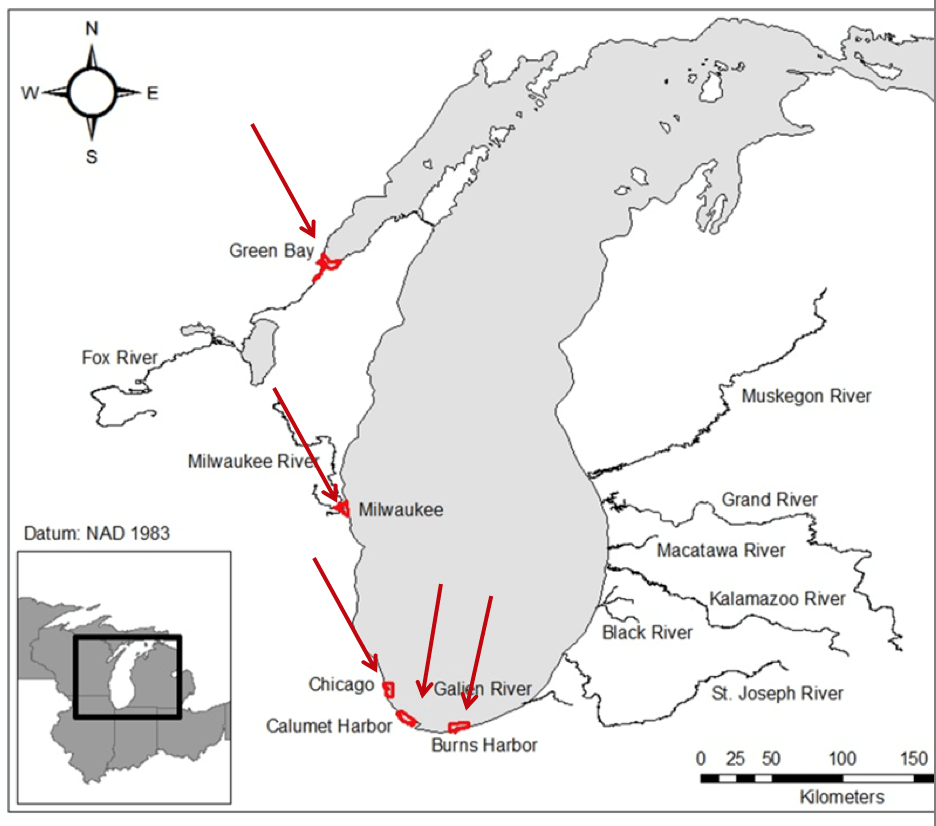Website Summary
The Laurentian Great Lakes is not just the largest freshwater system in the world, it is also an important natural laboratory for scientists who study the potentially negative consequences of aquatic invasive species (AIS). This research, and studies like it all over the world, demonstrate that fish and macroinvertebrates are damaging freshwater and marine communities on a global scale (Mills et al. 1993 & Molnar et al. 2008). As the region becomes more connected by industrial activity, trade agreements, and tourism, AIS has been given opportunities to alter the Great Lakes ecosystem and its native species.
While researching AIS introduced into the Great Lakes, the United States Fish and Wildlife Service conducted their AIS Early Detection and Monitoring Program at five study sites (hotspots) that include Green Bay Harbor and Milwaukee Harbor, Wisconsin, Chicago Harbor and Calumet Harbor, Illinois, and Burns Harbor, Indiana in Lake Michigan (Hayer & Petasek 2017). A couple objectives for this program include Environmental DNA analysis of Silver and Bighead Carp and early detection of non-native and invasive species. In 2017, this program used a combination of bongo nets and light traps to capture larval fish to observe if their abundance is either relatively low or abnormally spreading to new geographical ranges (Hayer et al. 2017 & Hayer 2017). This study showed that in 2017 no new AIS were discovered in Lake Michigan. While these results are encouraging there is more work to be done with the AIS Early Detection and Monitoring Program.
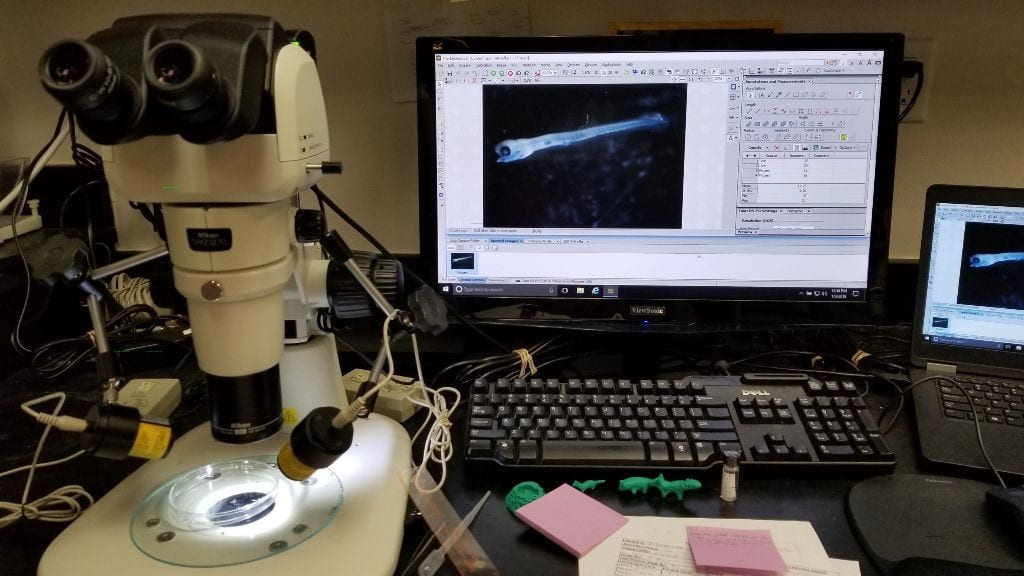
Dissecting Microscope (Nikon SMZ-1270) Equipped with a Camera (Nikon NIS-Elements software). USFWS/Adam Dziewa. 2018.
To have the best chances to catch these specific aquatic invasive species, the USFWS used a combination of bongo nets and quatrefoil light traps (Hayer 2017) at the five hotspots mentioned above. After collecting and preserving the larval fish samples, we used a dissecting microscope (Nikon SMZ-1270) equipped with a camera (Nikon NIS-Elements software) to identify and measure larvae (Shaffer 2016).
The research from Hayer et al. (2017) identified Chicago Harbor, Calumet Harbor, Burns Harbor, Milwaukee Harbor, and Green Bay Harbor as high-risk locations for aquatic invasive species introduction. These sites were selected based on numerous vectors of introduction: commercial & recreational traffic, population, and connectivity.
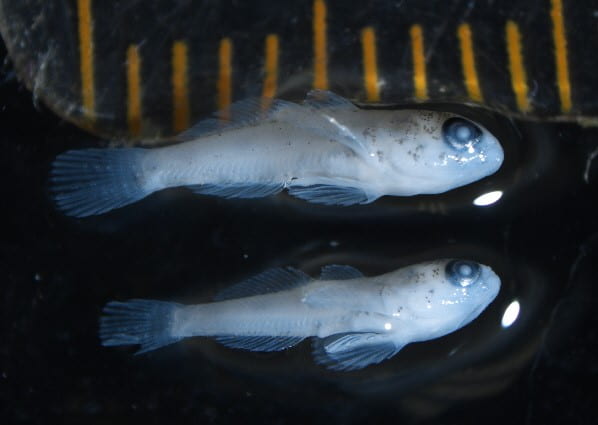
Round Goby Larvae. 7 mm. United States Fish and Wildlife Service. Green Bay, WI. Adam Dziewa. 2018.
From the 2017 AIS EDM Program, 14,000 larvae were collected in 26 bongo net tows and 187 light traps. These fish larvae were properly identified, measured, and photographed in order to illustrate what species were caught in each hotspot. The fish that were collected represented 29 species from 16 families.
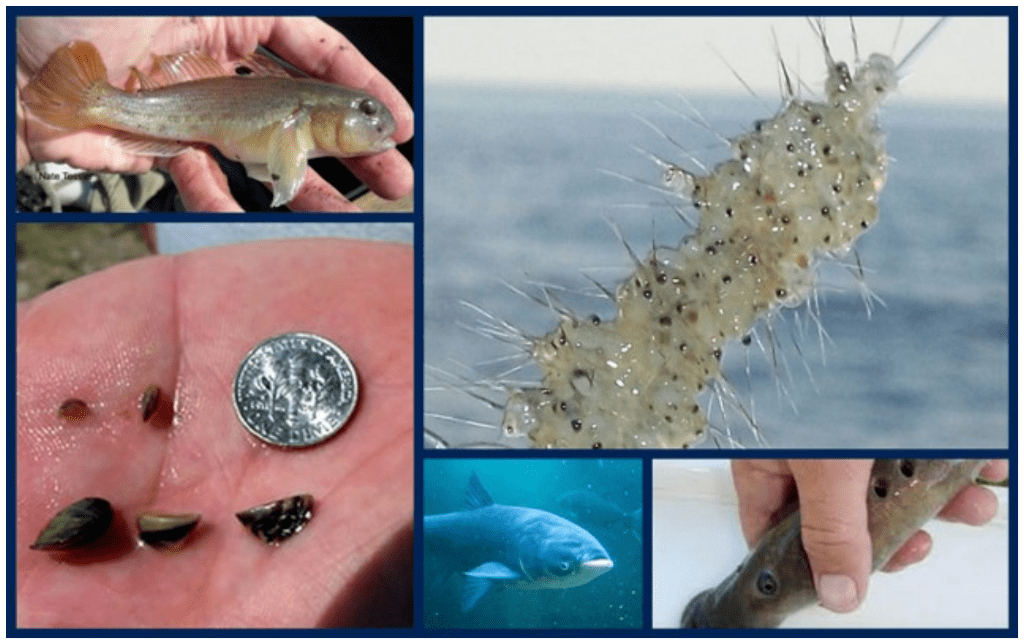
Collage of AIS in Lake Michigan. The United States Fish & Wildlife Service. 2017.
Today, aquatic invasive species are continuing to alter the Great Lakes ecosystem. These changes have greatly affected recreation, human health, economy, and ecosystems (food web disturbances). This aquatic invasive species library allows for the community to become better educated while learning the proper way to identify and report them.
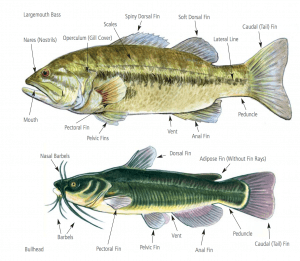
Physical Characteristics of Freshwater Fish in Wisconsin (WIDNR)
Review common terms and illustrations that are associated with aquatic invasive species and fish ecology research.
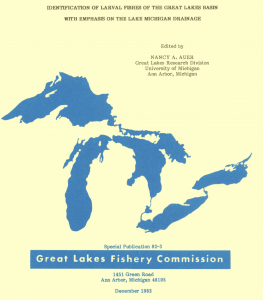
Auer, N. A. (ed.). 1982. Identification of larval fishes of the Great Lakes basin with emphasis on the Lake Michigan drainage. Great Lakes Fishery Commission, Ann Arbor, MI 48105. Special Pub. 82-3:744 pp.
Review resources and references that were used in order to construct this website, research adult/larval fish species, and promote aquatic invasive species education.

The University of Wisconsin – Green Bay. 2018
I would like to show my gratitude and appreciation to the people, agencies, and UWGB who supported and guided me through this graduate journey.

